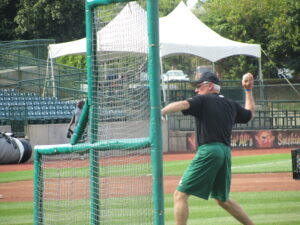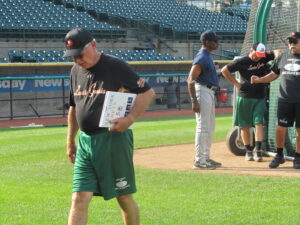First, just stop. It is nobody’s fault the Mets are not going to the World Series. All the people your Mets instincts tell you to blame are the ones you should thank.
Disclaimer: This is what I wrote in my first draft after the Mets laid two eggs in a row at home against the Dodgers in the NLCS. But since they forced a Game 6 and showed some resolve, the response from the fan base seems like one of appreciation. Sure, the 10-5 season-ending loss in the Championship Series doomed me—and other fans of a certain age—to a World Series from hell, like the one we had to endure in a grammar school full of Yankees fans as the Dodgers and Yankees met in October in 1977, 1978, and 1981. So nobody is confused, I’ll be rooting for the Dodgers, of course. In my long line of least-favorite teams, the Dodgers are right there with the Phillies and Braves. But when you are hounded by Yankees fans as a kid during those aforementioned years, you know you never could root for that team under any circumstances. Now back to our report card…
Final Grade A- (find a way to beat the Dodgers and you get an A; beat the Yankees in the World Series and it’s A++++. The 2024 Mets got the best of the Braves, Brewers, and Phreakin’ Phils this fall! The Dodgers, right now, are better than the Mets. Shohei Ohtani’s play now-pay later contract is the main reason the Dodgers don’t have a higher payroll than the Mets. Ohtani is the best hitter in the National League and might be for some time. And if you pitch around him, you have to face former MVP and still elite player (at numerous positions) Mookie Betts. And then Freddie Freeman (when he can walk). Starting pitching might be L.A.’s weak spot, but over all those high-pressure games the Mets played from Good Monday in Atlanta to Black Sunday in October, Mets pitching started to fray. This was a great October. Rookie manager Carlos Mendoza outmanaged Pat Murphy in Milwaukee as well as Philadelphia’s Rob Thomson.
David Stearns did not get that big money free agent and it went pretty well. The hard work he did this year paid off. He decided to bring up Mark Vientos and cut bait on Bret Baty, who still may resurface. The organization’s minor leagues are brimming with top prospects they’ll need to find places for. After this season, I have confidence that Stearns and Mendoza will find ways to work these players in or spin them off to get the pieces that the team needs. Hard-throwing young pitchers are something a team can always use. Back in the 1980s, Frank Cashen made the Mets into a power by bringing along young studs and trading the overhyped duds for the veterans the team needed. Gary Carter comes to mind, as does Bob Ojeda, Tim Teufel, Ray Knight, Howard Johnson, and even his original masterstroke: Keith Hernandez, the first imported piece of the puzzle. Sid Fernandez and David Cone were somewhat young when the Mets acquired them, but Cashen’s staff fleeced both the Dodgers and Royals, respectively.
I know you are excited to get the final grades, but here are some ground rules. For the first half, batters had to have 50 at bats and pitchers 15 innings pitched; so we’ll make it 80 at bats and 25 innings for the full year—and postseason numbers will certainly count. Players who qualified in the first half or were acquired/promoted in the second half only need to meet the minimums for one half. (This is the first time I have done both Midterm and Final Grades in a season since 2019, so we have to reset.) My convoluted rules prevent handing out grades to the likes of Brooks Raley, who was supposed to be the go-to lefty before he hit the IL in April and won’t return until ’25 (the last of a three-year deal). Also worth mentioning is Joey Lucchese, who went 4-0 in 2023, started once in the first six months of 2024, was DFAed, signed back with the team, and pitched a pretty solid game 162, which New York didn’t care about after beating Atlanta in the greatest doubleheader split in Mets history on September 30. Now we list the other pitchers who did not make the cut: Alex Young, Eric Orze, Tyler Jay, Josh Walker, Yohan Ramirez, Grant Hartwig, Cole Sulser, Ty Adock, Julio Teheran, Michael Tonkin, Matt Festa, and 2023 ace turned 2024 postseason opener, Kodei Senga.
Hitters who didn’t make the cut: Eddy Alvarez, Ben Gamel, Zack Short, Joe Hudson, Pablo Reyes, Joey Wendle, and Luisangel Acuna, Ronald’s little brother, who fell a few at bats short of qualifying. He hit .308 with three home runs and solid defense at short during Francisco Lindor’s late-season back issue.
Now here’s the gang that made the 2024 team so memorable.
Second-Half 2024 Report Card
1H 2H Final
Francisco Lindor B+ A+: A He should be the next captain. Continually leads by example. The hero of 2024 at Citi.
Julio Iglesias A B+: A There would have been much less singing and winning without castoff turned standout. OMG!
Mark Vientos B+ B+: B+ After showing little in the past, he lit up Citi and kept improving all way through NLCS.
Sean Manaea B+ B+: B+ First half-second half, home-away were exactly same. Changed motion midseason and thrived.
Francisco Alvarez A- B-: B+ Not yet 23 and with much to learn, I anoint him Mets’ best homegrown catcher ever.
Jose Butto B+ B+: B+ Solid starter became multi-innings man when Dedniel Nunez got hurt. Don’t skimp on days off!
Pete Alonso B- B+: B In 2019, I said he’d be the next Mets captain. Time passes, but his power and passion are real.
Edwin Diaz C+ B+: B Gave him an F in 2019, 5 years later Sugar is a warrior with a hand in almost every crucial Mets win.
Jose Quintana C+ B+: B Overtook Severino as top pitcher down stretch. His 0.72 ERA in Sept. helped Mets make their run.
Luis Severino B B-: B Ex-Yankee was durable and threw the only complete game shutout by a Met. (Tied for MLB lead!)
David Peterson B- A-: B He’s legit. Got crucial win in Milwaukee on final Sunday; 4 days later clinching save in same place.
Brandon Nimmo B C: B- The best .224 hitter in the game! Injured but continually got on base. Huge HRs vs. Atlanta & Philly.
Tyrone Taylor C- B: C+ Hit almost 50 points higher in the second half and started every day in CF. Thrives in big situations.
Starling Marte C C: C Missed a lot of time with injuries, but came through late in games and in postseason.
Tylor Megill D+ B-: C Bounced back and forth to minors. Mets won each of his last 6 starts, ending in Atlanta.
Luis Torrens B D: C Arrival coincided with turnaround until Alvarez returned from hand injury. Hit 100 points lower in 2H.
Jeff McNeil D B: C Despite brutal first half, he soared until he broke his wrist; showed that Squirrel gumption in NLCS.
J.D. Martinez B D: C A key leader and producer in first half; he hit .199 in second half but had a few Oct. hits (until he didn’t).
Reed Garrett C+ C-: C Garrett’s either on or off. Injured from overuse, he came back to get outs (or not) in the pinch.
Harrison Bader C D-: D+ Dropped off a cliff in the second half and morphed into a defensive replacement.
Adam Ottavino D- C-: D+ Was better in the second half. Pitched in some big games down stretch. At 38, near the end.
D.J. Stewart D- D: D Just 22 plate appearances in second half but was a little better. He can walk but does not hit enough.
Only Appeared in One Half as Met
Dedniel Nunez B+ Pitched great until injured in July. Hope he can anchor middle innings. Needed him in Oct.
Jesse Winker C+ Hard to believe he wasn’t a Met all season. Endured terrible slump in Sept; back with a vengeance in Oct.
Ryne Stanek C+ A 6.06 ERA after coming from Seattle, but had some great Oct. outings: 2.1 IP for W in Game 5 of NLCS.
Sean Reid-Foley C+ He somehow had a 1.66 ERA, despite a somewhat underwhelming first half. Injured and out in June.
Phil Maton C: People love to hate on some Maton. One of team’s top relievers (2.51 ERA), overused and useless in Oct.
Danny Young C For once, here’s a guy who did nothing for Braves and fanned 48 in 37.2 IP as a Met.
Drew Smith C This reliever has endured some tough luck. It might be awhile before you see him again. Godspeed, son.
Christian Scott C- Kid had good stuff and a great first start. Like Smith, surgery will keep him out of Flushing until 2026.
Paul Blackburn C- Starter arrived from Oakland and came on like a house of fire, but he got hurt and didn’t even log 25 IP.
Brett Baty D Once liked him over Vientos due to BB’s glove. Their fielding percentage in ’24 was similar. And Mark can hit!
Jake Diekman D- A lefty with 3 saves, who fanned Judge in a huge spot, and still no one took him after he was released.
Adrian Houser D- Expensive mopup guy Mets had to cut after July trading deadline to make way for useful relievers.
Huascar Brozoban D- Came highly recommended from Miami. At best he’s a work in progress; could bounce back in ’25.
Tomas Nido D- To complainers about Alvarez: Remember when Nido caught every day? Get on your knees & be thankful.
Omar Narvaez F When Nido wasn’t catching in May, this guy was. His ’24 totals: .151/.191/.185. And he can’t catch.
Jorge Lopez F OK numbers (3.18 ERA, 2 saves), but Mets excelled once they cut guy who ragged them. Feed him to Grimace.
Manager/President
Carlos Mendoza C+ A+: B+ Started off 0-5, a 9-19 May, injuries galore, integrated new players constantly, and beat the Braves to get in the postseason. And then there’s what he did in the postseason…
David Stearns C A: B A lot of people think they are smarter than the front office folks. This could have been an 89-loss team, he crafted them into an 89-win team, keeping us enthralled into late Oct. for the first time since 2015.

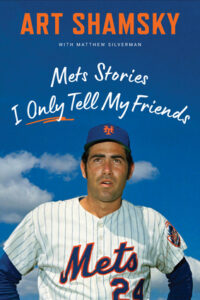
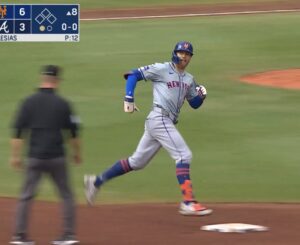
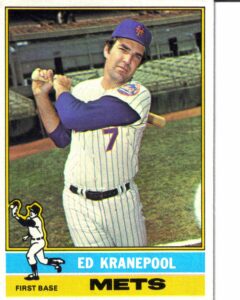
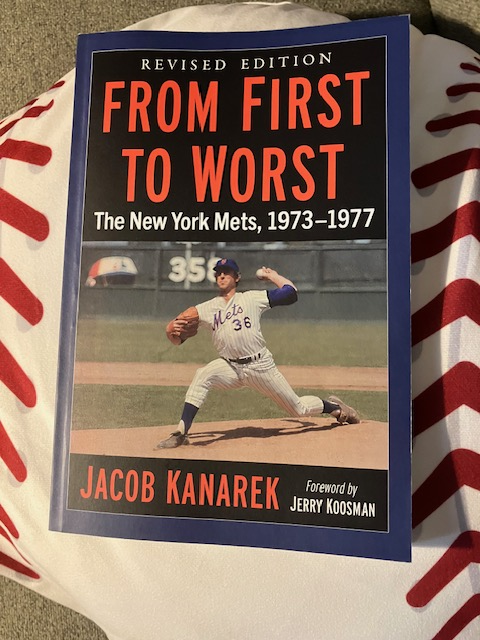 It’s been 50-plus years since the 1973 Mets pulled off one Amazin’ comeback in the closing weeks of the season. With 10 players still on the roster from the 1969 Miracle Mets world championship, that ’73 club had a lot of veterans who were still pretty young but had solid postseason experience. Wayne Garrett was only 25, Ken Boswell was 27, Tom Seaver, Tug McGraw, and Ed Kranepool had been in the majors for years and were still just 28. The Mets had a new bunch of young players: 1972 NL Rookie of the Year Jon Matlack and slugging first baseman John Milner were each in their second season; Don Hahn, 24, patrolled center field; catcher Ron Hodges was just a year removed from Appalachian State University; and George “The Stork” Theodore was their everyman turned everyday player due to injuries to Cleon Jones and their oldest player, the late great Willie Mays. The Mets had also added key players through trades that brought Felix Millan as double play partner for Bud Harrelson, lefty George Stone, and Rusty Staub, whose acquisition was the last move overseen by Gil Hodges.
It’s been 50-plus years since the 1973 Mets pulled off one Amazin’ comeback in the closing weeks of the season. With 10 players still on the roster from the 1969 Miracle Mets world championship, that ’73 club had a lot of veterans who were still pretty young but had solid postseason experience. Wayne Garrett was only 25, Ken Boswell was 27, Tom Seaver, Tug McGraw, and Ed Kranepool had been in the majors for years and were still just 28. The Mets had a new bunch of young players: 1972 NL Rookie of the Year Jon Matlack and slugging first baseman John Milner were each in their second season; Don Hahn, 24, patrolled center field; catcher Ron Hodges was just a year removed from Appalachian State University; and George “The Stork” Theodore was their everyman turned everyday player due to injuries to Cleon Jones and their oldest player, the late great Willie Mays. The Mets had also added key players through trades that brought Felix Millan as double play partner for Bud Harrelson, lefty George Stone, and Rusty Staub, whose acquisition was the last move overseen by Gil Hodges.